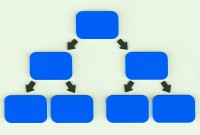- Home
- Business Processes
- Industry Knowledge
- Aerospace Industry
- Automotive Industry
- Banking Domain
- BFSI Industry
- Consumer/ FMCG Industry
- Chemicals Industry
- Engineering & Construction
- Energy Industry
- Education Domain
- Finance Domain
- Hospitality Domain
- Healthcare Industry
- Insurance Domain
- Retail Industry
- Travel and Tourism Domain
- Telecom Industry
- Leadership Skills
- eLearning
- Home
- Industry Knowledge
- Banking Domain
- Real life examples of challenges in banking industry & strategies adopted for success
Real life examples of challenges in banking industry & strategies adopted for success
Along with the banking industry’s digital transformation, comes significant challenges in the operational model as well as customer and business strategy to remain competitive. Given in this article are few of the real-life challenges faced by banks, and the strategies adopted by the banks to succeed in the coming year and mitigate the risk posed by these challenges. Overcoming these challenges is not easy and the transition from legacy systems to innovative solutions requires various coordinated steps to survive but thrive in the current landscape.
The banking industry is undergoing a radical shift fueled by ever-changing technology, competitive landscape driven by new FinTechs, evolving business models, mounting regulation and compliance pressures, and new disruptive technologies. Given in the article are some of the real problems faced by banks and how they worked through them.
Project 1 - Value Proposition Segmentation
Project Description
The purpose of this project is to identify a single segment within the mass market with the intent of creating a specific value proposition (s) relating to either the current account or personal loan product.
The effort should assist the business in helping to acquire a greater number of new clients by more effectively designing, developing, and marketing the product offerings and value proposition.
Project Deliverables & Timeline
- Background and project orientation
- Key observations and questions
- Segment selection and criteria for selection
- Product selection and key requirements
- High-level marketing plan
Project 2 - Marketing Spend Effectiveness (MSE) Evaluation
What is the current business challenge?
As Marketers are increasingly being asked to maximize their budgets, there is a desire to correlate various marketing expenditures with business metrics to demonstrate relative efficiency and effectiveness in ability to drive profitable growth.
Cutting costs is critical to navigating the slowdown. In the absence of clear MSE methodology marketers run the risk to not being able to protect critical investments. Bank has not been able to generate such analysis internally due to its multi-variate nature, and is currently reliant on econometric models provided by media agencies.
What is the goal of this project?
This project will identify alternate best practices for correlating marketing spend to business results. The project team will
- identify market best practices amongst the industry or external suppliers, and
- evaluate the available options on a cost/benefit matrix,
- ultimately recommending a marketing expenditure evaluation tool that represents the best value
Project 3 - Segment based risk strategy
What is the current business challenge?
Consumer business completed a detailed client segmentation and profitability study. Business strategy is being formed around the segment approach. Channel strategy, service levels, value props, product offering, and risk approach are about to align with the new strategy.
What is the goal of this project?
The project team will consist of representatives from Risk, Pricing, Marketing, and Retail sales and product teams. The project team will
- Review the output of the segmentation study from the perspective of risk parameters by segments
- Identify the opportunities targeting customers more precisely to improve risk efficiency
- Propose quick and doable solutions on how to change the current process/ approach to treat affluent mortgage customers differently (shorter cycle time but improving expected delinquency)
- Set the main elements of the segment based risk strategy (including collection)
Project 4 - Term Deposit (TD) Pricing Strategy
What is the current business challenge?
TDs are a very popular way to save. Whilst they represent large commercial benefits to banks, the margins are generally very low. 40% of the Bank's deposit balances are held on TD products. Most banks take a very simple approach to price TDs by offering a rate (which may be tiered) for a specific term. On maturity, it is rolled over into a similar term at the prevailing rate unless the customer specifies otherwise. This approach does not take into account individual circumstances, price sensitivity, etc.
What is the goal of this project?
Develop new approaches for TD pricing/product development, which enable banks to retain more balances, improve overall margins, and also to attract new customers. The project team will
- Review the current approach to TD pricing
- Document the current competitive landscape, and other bank’s offerings, including an overview of competitive value propositions, product features/benefits, pricing. margins, rollover rates, etc.
- Screen best practices around the globe from other banks
- Make recommendations to improve the profitability of these products for new customer recruitment, and retaining / rollover balances
- Define the commercial benefits to any recommendation
Project 5 - Developing Early-Warning Systems in Risk-Based Controls
Project Deliverables & Timeline
- Understanding the risky transaction, control, and reporting concepts; being aware of existing capabilities.
- Preparing a detailed project plan/project abstract
- Gathering all necessary data and information
- Creating early-warning systems and linking them with the existing database
- Finalizing the report and the presentation
Project 6 - Increasing Online Sales efficiency in personal loans and time deposits
What is the current business challenge?
The share of the online channel among overall sales of term deposit and personal loans is below the penetration rate of Online Channel usage among the bank.
What is the goal of this project?
- Increase the share of Online Channel within the overall sales.
- The goal is to increase the number and the volume of time deposit and personal loans sold on delivery channels
- Identify sales strategies of these specific products for Online Channel
- This strategy needs to be in line with current innovative and market leader (in online banking) position
The deliverables include:
- Review and apply brand-new applications and perspectives (like e-auctions)
- Channel-specific product development and marketing strategy of these new products
- Develop online sales & marketing strategy for current time deposit and personal loan products along with new products/applications developed within the project.
- Develop a Marketing Plan for current time deposit and personal loan products along with new products/applications developed within the project.
- Interactive Marketing Planning should also be included in the marketing plan (i.e. How to use social media, how to use online/mobile channels effectively)
Project 7 - Preparing Online Company Information Cards
What is the current business challenge?
Our target is to reach all the needed data in one report for each company. Also, we need this data to update itself automatically.
What is the goal of this project?
The project group will:
- Gather all the necessary information associated with customers in one database
- Link them to our Bank’s server in order for the data to update itself automatically.
- Create a one-page access report for each company containing all the necessary data
- Clearly understand Corporate Banking, its customers and the main data held in the Bank system associated with them
- Create an access database. Gather all the data associated with customers from the database. Also, link the data to our server.
- Finalize the required company card reports. Prepare the report out and presentation
Banking Domain Knowledge - Resources
Related Links
You May Also Like
-
Definition of Bank: Meaning of the term Bank and the Business of Banking
What do we mean by the word bank? How did the word bank originate? What is the most simple and concise definition of a bank that explains the fundamentals of the banking process? Does the definition of banking vary from country to country? What are the key differentiators between any other business and a Bank? Get answers to all these questions and explore the basics of bank and banking as an industry.
-
History of Banking: Evolution of Banking as an Industry
Banking is one of the oldest industries and banking in the form that we know of began at about 2000BC of the ancient world. It started with merchants making grain loans to farmers and traders while carrying goods between cities. Since then, the banking industry has evolved from a simplistic barter system and gift economies of earlier times to modern complex, globalized, technology-driven, and internet-based e-banking model. In this article, we will take you through the major events and developments in the history of the banking industry.
-
History of Banking: Famous Banks from the Past
Seven hundred years ago a bank was established in Venice, which made transactions resembling modern banking. In 1407, another bank was founded in Italy under the name of Banco di San Giorgio which was one of the oldest chartered banks in Europe. Sveriges Riksbank (Riksbanken), is the central bank of Sweden and the world's oldest central bank. The Bank of England is the second oldest central bank in the world, and most modern central banks have been based on that model. Let us explore some interesting events as we learn more about these early banking institutions.
-
History of Banking: The Gold Standard & Fractional Reserve Banking
Gold has always been considered as a safe economic investment and treated like a currency. All of the economically advanced countries of the world were on the gold standard for a relatively brief time. Under a gold standard, the value of a unit of currency, such as a dollar, is defined in terms of a fixed weight of gold and banknotes or other paper money are convertible into gold accordingly. Explore the fascinating history of the gold standard through the lens of history and also learn why banks hold back a certain fraction of deposits as reserves.
-
Overview of Banking Industry: The Industry Basics
Banks play a key role in the entire financial system by mobilizing deposits from households spread across the nation and making these funds available for investment, either by lending or buying securities. Today the banking industry has become an integral part of any nation’s economic progress and is critical for the financial wellbeing of individuals, businesses, nations, and the entire globe. In this article, we will provide an overview of key industry concepts, main sectors, and key aspects of the banking industry’s business model and trends.
-
Banking Sector, Segments & It's Classifications
The banking industry players deal in a variety of products from savings accounts to loans and mortgages, offer various services from check cashing to underwriting, caters to different types of customers from individuals to large corporates, serve diverse geographies from rural villages to cross-border operations. Thus the banking industry is made up of several types of banks, with their own objectives, roles, and functions. In this article, we will explore the various sectors, segments, and classifications of banking based on parameters like products, customers, types, etc.
-
Type of Banks: Different Types of Banks in India & their Functions
This article explains the banking structure in India and how different banks are classified as per RBI Norms. The Indian banking industry has been divided into two parts, organized and unorganized sectors. The organized sector consists of Reserve Bank of India, Commercial Banks and Co-operative Banks, and Specialized Financial Institutions (IDBI, ICICI, IFC, etc.). The unorganized sector, which is not homogeneous, is largely made up of money lenders and indigenous bankers. Learn what we mean by nationalized banks, scheduled banks, public sector banks, private banks, and foreign banks.
-
Types of Banks: Different Banks & their Classifications (Global)
The banking industry caters to various sections of society thus the focus of banking becomes varied, catering to the diverse needs of clients through different products, services, and methods. To meet this, we need distinctive kinds of banks addressing complex business & social needs. In this article, we will explain various types of banking institutions ranging from retail banks, commercial banks, co-operative banks, investment banks, central banks to various other types of specialized banks.
-
Banking Operations: Understanding Various Transactions & Activities
Banks perform a variety of operations ranging from basic or primary functions like day to day transactions at a branch to others that maybe the agency or general utility services in nature. The transactions that are incidental to revenue/sales or sustaining the business are an important element of the banking industry value chain. In this article, we will look at the key operations performed in the course of banking.
-
Banking Industry Business Model - Understanding How the Banking System Works
Banks are commercial profitable institutions and need to increase their business, grow their revenue, and provide returns to their owners. Unlike other stores and shops, banks are providing services rather than selling their products. Learn how banks get their funds and how they make money on services. Read more to learn how the banks earn their profit!
Explore Our Free Training Articles or
Sign Up to Start With Our eLearning Courses

About Us
Learning
© 2023 TechnoFunc, All Rights Reserved










